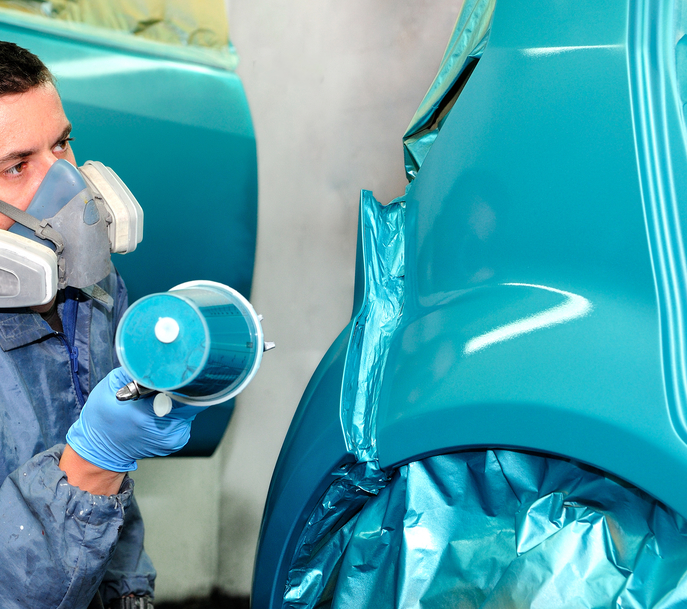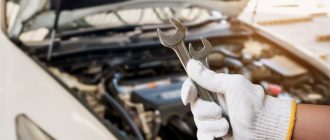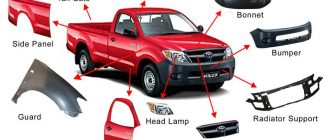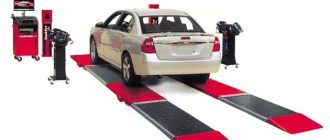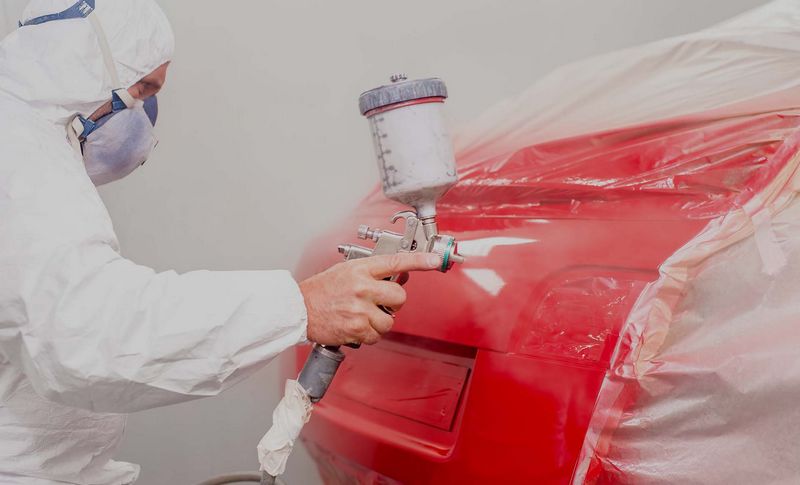
Types of Auto Body Paints and Their Uses
If you own an automobile, you know how important it is to keep its body in pristine condition. One of the key elements in maintaining the appearance of your car is choosing the right type of paint. There are several types of auto body paints available that serve different purposes, from enhancing the aesthetic appeal to protecting the surface from corrosion and weather conditions.
Here are some of the most common types of auto body paints and their uses:
1. Basecoat Paint: This type of paint is commonly used as a base layer for the car’s surface. It provides a smooth and even coating, preparing the surface for the application of the topcoat paint. Basecoat paints also offer excellent color matching capabilities, making them ideal for covering imperfections and achieving a flawless finish.
2. Clearcoat Paint: Clearcoat paints are applied as the final layer of the painting process. They provide a transparent protective coating that adds depth and gloss to the car’s surface. Clearcoat paints also offer UV resistance, protecting the underlying layers from fading caused by sunlight exposure.
3. Primer Paint: Primer paints are designed to provide a smooth and adhesive surface for the basecoat paint. They help promote better adhesion between the paint layers and the car’s body, ensuring a long-lasting and durable finish. Primer paints also offer corrosion resistance, protecting the underlying metal surface from rusting.
Choosing the right type of auto body paint depends on your specific needs and preferences. Whether you want to enhance the aesthetic appeal, protect the car’s body, or achieve a flawless finish, there is a type of paint that suits your requirements. Make sure to consult with a professional auto body shop to determine the best paint for your car and to ensure a high-quality finish that will stand the test of time.
Types of Auto Body Paints
When it comes to automobile coatings, there are several types of auto body paints available for different uses. Whether you are looking to repaint your car or touch up minor scratches, choosing the right type of paint is essential for achieving a professional and long-lasting finish.
Here are some of the most common types of auto body paints:
1. Acrylic Lacquer Paint: This type of paint is commonly used for vintage or classic cars. It provides a glossy and durable finish but requires regular maintenance to prevent fading or cracking.
2. Urethane Paint: Urethane paints offer excellent durability and resistance to chemicals, making them ideal for modern vehicles. They provide a shiny finish and are available in a wide range of colors.
3. Enamel Paint: Enamel paints are known for their durability and ability to withstand harsh weather conditions. They are commonly used for commercial vehicles and provide a high-gloss finish.
4. Water-based Paint: Water-based paints are an environmentally-friendly alternative to traditional solvent-based paints. They dry quickly and emit fewer volatile organic compounds (VOCs). However, they may not be as durable as other types of paints.
5. Metallic Paint: Metallic paints contain small metal flakes that create a shimmering effect when exposed to light. They are often used for custom car designs and provide a unique and eye-catching finish.
6. Pearl Paint: Pearl paints have a translucent appearance with a pearlescent sheen. They are popular for adding depth and complexity to car finishes and are commonly used in luxury and high-end vehicles.
Before choosing a type of auto body paint, consider the specific requirements of your project and consult with a professional if needed. Proper preparation and application techniques are crucial for achieving a flawless and long-lasting finish.
Metallic Paints
Metallic paints are a popular choice for automobile body painting due to their unique visual effects. These paints contain tiny metallic flakes that give the vehicle a shiny and reflective appearance, resembling the luster of metals.
There are different types of metallic paints available for cars, each offering a distinct look and feel. Some of the popular types include:
- Aluminum Metallic: This type of metallic paint provides a sleek and modern appearance to the vehicle. It gives a chrome-like finish, making the car stand out on the road.
- Gold Metallic: Gold metallic paints add a touch of luxury and elegance to an automobile. They are often used to highlight specific areas of the car, such as badges or accents.
- Silver Metallic: Silver metallic paints are a classic choice for car enthusiasts. They offer a timeless and sophisticated look to the vehicle, enhancing its overall aesthetic appeal.
- Copper Metallic: Copper metallic paints provide a warm and rich tone to the car’s exterior. This type of paint is often used to create a unique and eye-catching appearance.
Metallic paints can be used for various purposes on an automobile. Some of their uses include:
- Enhancing the overall appearance of the vehicle
- Creating a custom and personalized look
- Highlighting specific areas or features
- Adding a touch of style and sophistication
- Increasing the resale value of the car
When choosing a metallic paint for your car, consider the desired effect, the vehicle’s color, and your personal preferences. It’s important to ensure proper application and maintenance to keep the metallic paint looking its best for years to come.
Solid Paints
Solid paints are a popular choice for auto body coating due to their versatility and durability. These types of paints are commonly used to give a car a smooth and sleek finish. Solid paints are available in a wide range of colors, allowing vehicle owners to choose the perfect shade to match their preferences.
One of the main advantages of solid paints is their ability to hide imperfections and flaws on the car’s surface. This makes them an ideal choice for older vehicles or those with minor scratches or dents. The solid paint will help to mask these imperfections, giving the car a refreshed and polished look.
Another benefit of solid paints is their resistance to fading. With exposure to sunlight and other environmental factors, some paints can fade over time. However, solid paints are formulated to resist fading, ensuring that the car’s color remains vibrant and true for years to come.
Furthermore, solid paints are known for their ease of application. They can be applied using a variety of methods, including spray guns and brushes, making them suitable for both professional auto body shops and DIY enthusiasts. The quick-drying properties of solid paints also allow for efficient and timely application.
In summary, solid paints are a reliable option for individuals looking to enhance the appearance of their car. Their versatility, durability, and ability to hide imperfections make them an excellent choice for any vehicle. Whether you have a vintage automobile or a modern car, solid paints can provide the perfect finishing touch.
Pearl Paints
Pearl paints are a type of auto paint that can add a unique and eye-catching effect to your vehicle’s exterior. These paints contain special pigments that create a shimmering effect, resembling the appearance of pearls. The use of pearl paints can give your car a distinctive and luxurious look, making it stand out from the crowd.
There are different types of pearl paints available on the market, each with its own unique color and effect. Some popular types include white pearl, silver pearl, and gold pearl. These paints can be used to create a variety of finishes, from subtle and classy to bold and vibrant.
One of the main uses of pearl paints is in custom car and motorcycle painting. These paints are often chosen by enthusiasts who want to personalize their vehicles and make a statement on the road. Pearl paints can be used to create intricate designs, add accents, or completely transform the appearance of a vehicle.
In addition to their aesthetic appeal, pearl paints also provide a protective coating for your car’s surface. The special pigments in these paints create a durable and long-lasting finish that can withstand regular use and exposure to the elements. The coating provided by pearl paints also helps protect your vehicle’s exterior from scratches, chips, and UV damage.
Whether you’re looking to give your car a subtle touch of elegance or make a bold statement, pearl paints are a versatile choice. Their unique colors and shimmering effects can enhance the appearance of any vehicle, from classic cars to modern automobiles. With the right application and care, pearl paints can provide a stunning and durable finish that will turn heads wherever you go.
| White Pearl | White | Pearlescent shimmer |
| Silver Pearl | Silver | Reflective metallic shine |
| Gold Pearl | Gold | Rich and radiant golden hue |
Matte Paints
Matte paints are a popular choice for automotive enthusiasts who want a non-shiny finish on their vehicles. This type of coating is known for its flat, velvety appearance, which gives the automobile a unique and stylish look. Matte paints have gained popularity in recent years due to their ability to hide imperfections and scratches on the body of the car.
One of the main advantages of matte paints is their low sheen, which reduces the reflection of light and glare. This makes them ideal for those who want to make a statement with their vehicle without the distraction of a glossy shine. Matte paints are often used on high-end luxury cars and sports vehicles to enhance their sleek and refined appearance.
Another advantage of matte paints is their resistance to stains and fingerprints. Unlike glossy paints, which tend to show every mark, matte paints are more forgiving and easy to maintain. They also have a unique tactile feel, adding depth and character to the vehicle’s body.
Matte paints come in a variety of colors and finishes, allowing car owners to customize the look of their vehicles. Some popular matte paint options include matte black, matte white, and matte gray. These colors can be further enhanced with metallic or pearlescent pigments to create a truly one-of-a-kind finish.
While matte paints offer many benefits, it’s important to note that they require special care and attention. Regular washing and waxing may not be suitable for matte finishes, as they can cause unwanted shine and damage. Owners of matte-painted cars should use specific cleaning products designed for matte finishes to ensure the longevity and beauty of the paint.
| Low sheen, reducing glare and reflection | Require special care and cleaning |
| Hide imperfections and scratches | May show dirt and dust more easily |
| Resistance to stains and fingerprints | Some limitations in color options |
| Unique and stylish appearance | Costlier than traditional glossy paints |
In conclusion, matte paints offer a unique and stylish alternative to traditional glossy finishes. Their low sheen, resistance to stains, and ability to hide imperfections make them a popular choice for automotive enthusiasts. However, it’s important to keep in mind that matte paints require special care and attention to maintain their beauty and longevity.
Candy Paints
Candy paints, also known as translucent paints, are a type of coating that is used to create unique and vibrant finishes on cars and vehicles. These paints are highly popular among automotive enthusiasts and custom car builders because of their eye-catching appearance. Candy paints are known for their ability to create a deep, rich, and multi-dimensional color that resembles the appearance of a hard candy.
The uses of candy paints are diverse and are limited only by the creativity of the painter. They can be used to create custom designs, accents, or even an overall candy-colored finish. These paints are often applied over a metallic base coat to enhance the visual effects. Candy paints can be applied using various techniques, such as airbrushing, spraying, or hand-painting, depending on the desired result.
One of the main advantages of candy paints is their ability to create a striking visual impact. The translucent nature of these paints allows the metallic base coat to be seen through the candy layer, resulting in a unique and vibrant color. In addition, candy paints often have a high-gloss finish, further enhancing their visual appeal.
| Creates a deep, rich, and multi-dimensional color |
| Enhances the visual effects of a metallic base coat |
| Allows for custom designs and accents |
| Provides a high-gloss finish |
However, candy paints also have some limitations. They require a careful and precise application process to achieve the desired results. Additionally, candy paints are often more expensive than traditional paints due to their unique properties and manufacturing process.
In conclusion, candy paints are a popular choice for automotive enthusiasts and custom car builders who want to create a unique and vibrant finish. With their ability to create a deep, rich, and multi-dimensional color, candy paints offer endless possibilities for custom designs and accents. Whether used for an overall candy-colored finish or as subtle accents, candy paints can transform the appearance of any vehicle.
Choosing the Right Paint
When it comes to selecting the ideal paint for your vehicle, there are several factors to consider. The right paint can enhance the appearance of your car and provide long-lasting protection for its body.
Here are some key points to keep in mind when choosing the right paint for your automobile:
- Type of paint: There are various types of auto body paints available, including acrylic, enamel, and urethane. Each type has its own unique properties and uses. Acrylic paint is known for its quick drying time and gloss finish, while enamel paint provides a durable and glossy coating. Urethane paint, on the other hand, offers excellent resistance to chemicals and UV rays.
- Color options: Consider the color options available for the paint you’re considering. Some paints offer a wide range of colors, allowing you to customize the look of your car. Make sure to choose a color that suits your style and complements the overall design of your vehicle.
- Intended use: The intended use of your vehicle should also influence your paint choice. If you have a classic car that will primarily be showcased at car shows, you may want to opt for a high-quality, expensive paint. For a daily driver, a more affordable paint may be sufficient.
- Application method: Consider the application method required for the paint you choose. Some paints are designed for professional application, while others can be applied by DIY enthusiasts. If you plan to apply the paint yourself, make sure it comes with clear instructions and is user-friendly.
Remember, choosing the right paint for your car is crucial for achieving the desired look and protecting its body. Take the time to research and compare different options, and consult with professionals if needed. With the right choice, your car will not only look great but also stay protected for years to come.
Factors to Consider
Choosing the right type of auto body paint for your car is an important decision. There are several factors that you should consider before making your choice:
- Color: The color of the paint is one of the most obvious factors to consider. Think about the effect you want to achieve and how the color will complement your car’s overall appearance.
- Durability: Consider the durability of the paint. Do you want a long-lasting coating that can withstand harsh weather conditions, or are you looking for a temporary solution?
- Application: Think about the application process. Some paints require multiple coats, while others can be applied in a single layer. Consider your skill level and the time you are willing to invest in the application.
- Finish: Consider the type of finish you want for your car. Do you prefer a glossy or matte finish? Each type has its own advantages and disadvantages, so choose the one that best suits your preferences and needs.
- Coverage: Consider the coverage of the paint. Some paints offer better coverage than others, which can affect the final result and the number of coats required.
- Compatibility: Check the compatibility of the paint with the type of vehicle you have. Some paints are specially formulated for specific automobile models or body materials, so make sure to choose a paint that is suitable for your car.
- Environmental Impact: Consider the environmental impact of the paint. Look for low VOC or eco-friendly options that minimize the release of harmful chemicals into the air.
By considering these factors, you can make an informed decision and choose the right type of auto body paint that will best suit your car and your needs.
Matching Existing Paint
When it comes to automobile coatings, one of the most important considerations is matching the existing paint on your vehicle. Whether you need to touch up a scratch or repair a damaged panel, finding the right paint color is crucial for a seamless finish.
There are a few different types of paints that can be used to match existing paint on a car:
- Touch-up Paint: This type of paint is specifically designed for small areas, such as scratches or chips. It comes in a small bottle or pen and can be applied directly to the damaged area. Touch-up paint is a quick and easy solution for minor paint damage.
- Spray Paint: Spray paint is commonly used for larger areas that need to be painted, such as a whole panel or section of the car. It is available in a wide range of colors and finishes, making it easier to match the existing paint. Spray paint can be applied using a spray gun, airbrush, or aerosol can.
- Custom-mixed Paint: In some cases, the existing paint color may not be available in off-the-shelf touch-up or spray paints. In such situations, custom-mixed paint can be used to accurately match the existing color. This involves creating a new paint mixture based on the car’s paint code or a sample of the existing color.
Matching existing paint requires careful color selection and application technique. It’s important to consider factors such as the age of the paint, the fading or weathering that may have occurred, and the type of surface being painted. When in doubt, it’s best to consult a professional auto painter or body shop for assistance in matching the exact color of your car.
Remember, a perfectly matched paint job not only enhances the appearance of your car but also helps to preserve its value. So, take the time to choose the right type of paint and apply it correctly to achieve the best results.
Budget Considerations
When it comes to choosing the right type of auto body paint for your car, budget considerations play a crucial role. The cost of different types of paints can vary significantly, so it’s important to consider your budget before making a decision.
Here are a few budget considerations to keep in mind:
- Paint Types: There are various types of auto paints available, each with its own price range. If you’re on a tight budget, you might want to consider using acrylic enamel or urethane paints, as they are generally more affordable compared to other types like water-based paints.
- Car Size: The size of your car can also impact the cost of the paint job. Larger vehicles will generally require more paint, which can increase the overall cost. It’s important to take this into account when budgeting for your auto body paint project.
- DIY vs. Professional: Another factor to consider is whether you plan to do the paint job yourself or hire a professional. While DIY projects can save you money on labor costs, keep in mind that professional painters have the expertise and equipment to achieve a high-quality finish. Depending on your skills and the complexity of the project, it may be more cost-effective to enlist the help of a professional.
- Coating Options: In addition to the type of paint, you might want to consider the coating options available. Clear coats and protective coatings can enhance the durability and longevity of the paint job, but they also come at an additional cost. It’s up to you to decide if these extra coatings are worth the investment for your budget.
By considering these budget factors, you can make a more informed decision when selecting an auto body paint for your vehicle.
Question-answer:
What are the different types of auto body paints available?
There are several different types of auto body paints available, including acrylic, enamel, urethane, and water-based paints. Each type has its own unique properties and uses.
What is acrylic auto body paint?
Acrylic auto body paint is a popular choice for its affordability and easy application. It dries quickly and provides a glossy finish. It is best suited for DIY projects or for temporary paint jobs.
What is enamel auto body paint?
Enamel auto body paint is a durable and long-lasting paint that provides a high-gloss finish. It is resistant to scratches and UV rays, making it ideal for exterior car painting. It requires more skill and equipment for application compared to acrylic paint.
What is urethane auto body paint?
Urethane auto body paint is known for its durability and resistance to chemicals, chips, and fading. It provides a high-gloss and long-lasting finish that is ideal for professional auto body shops.
